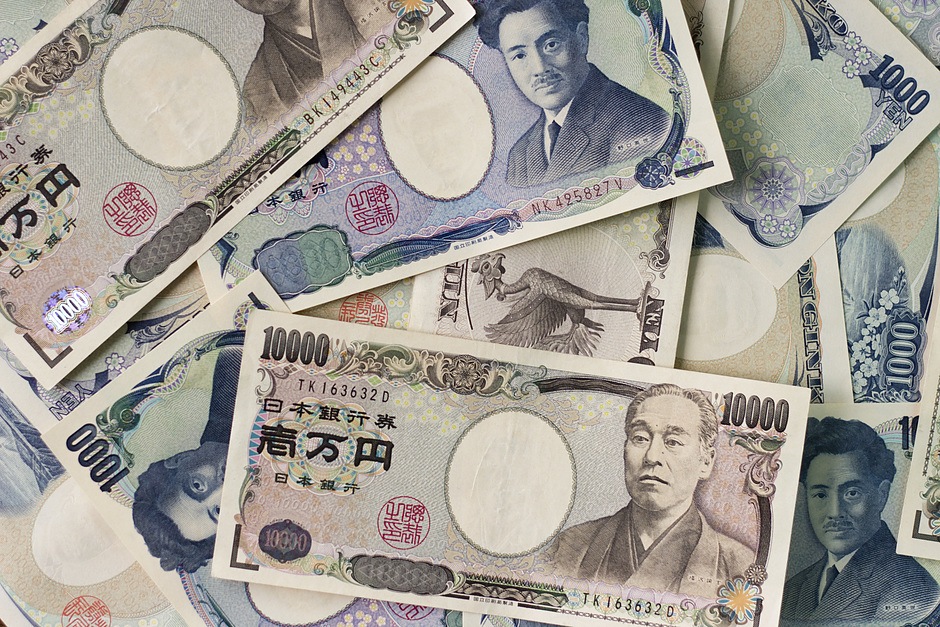Japanese Yen holds gains despite a dovish mood surrounding BoJ, awaits US NFP
- The Japanese Yen appreciates as the US Dollar remains tepid ahead of the US labor data release on Friday.
- Japan’s Economy Minister Akazawa stated that the timing of any monetary policy changes is crucial
- Traders await Friday’s US employment data, including Nonfarm Payrolls (NFP) and Average Hourly Earnings, for further direction.

The Japanese Yen (JPY) retraces recent gains following comments from Japan’s ministers on Friday. Japan's Prime Minister (PM) Shigeru Ishiba stated that overcoming deflation is the top economic priority, with economic growth serving as the foundation for fiscal stability. Ishiba pledged to swiftly compile an economic package aimed at easing the impact of rising costs on households. He also emphasized the importance of strengthening ties with like-minded nations to complement Japan's alliance with the United States (US), while pursuing a regional security policy that balances diplomacy with military strength.
Japan's Economy Minister Ryosei Akazawa stated that Prime Minister Shigeru Ishiba and the Bank of Japan (BoJ) both agree that overcoming deflation is Japan's highest priority. Akazawa added “No change to the interpretation of the government-Bank of Japan (BoJ) accord targeting 2% inflation.” The timing of monetary policy change is important and must align with Japan's broader goal of exiting deflation.
Japan's Chief Cabinet Secretary Yoshimasa Hayashi announced on Friday that Prime Minister Ishiba has directed the creation of a comprehensive economic package. Hayashi also mentioned that he plans to present a supplementary budget to Parliament following the lower house election.
However, the downside of the USD/JPY pair could be limited as the Japanese Yen may struggle due to the waning likelihood of further rate hikes by the Bank of Japan. Newly elected PM Ishiba stated on Wednesday, "I do not believe that we are in an environment that would require us to raise interest rates further," according to Reuters.
Daily Digest Market Movers: Japanese Yen receives downward pressure from dovish mood surrounding the BoJ
- The US Dollar (USD) gained strength following a better-than-expected US ISM Services PMI and ADP Employment Change reports, which challenged dovish expectations for Federal Reserve (Fed) monetary policy.
- The CME FedWatch Tool indicates that markets are assigning a 67.4% probability to a 25 basis point rate cut by the Federal Reserve in November, while the likelihood of a 50-basis-point cut is 32.6%, down from 35.2% a day ago.
- Federal Reserve Bank of Chicago President Austan Goolsbee reiterated on Thursday that the interest rates need to come down over the next year by “a lot.” Goolsbee further stated that he’d like to keep the unemployment rate at 4.2% and prevent it from rising any further.
- US ISM Services PMI rose to 54.9 in September, from 51.5 in August and exceeding the market forecast of 51.7. Meanwhile, the Services Prices Paid Index, a key inflation indicator, climbed to 59.4 from 57.3.
- Futures indicated less than a 50% likelihood of the Bank of Japan raising rates by 10 basis points by the end of 2024. Additionally, rates are projected to reach only 0.5% by the end of next year, up from the current 0.25%, per Reuters.
- BoJ board member Asahi Noguchi stated that the central bank "must patiently maintain loose monetary conditions." Noguchi indicated that the BoJ will likely make gradual adjustments to the level of monetary support while carefully assessing whether inflation sustainably reaches the 2% target, supported by wage growth.
- The ADP US Employment Change report showed an increase of 143,000 jobs in September, surpassing the forecasted 120,000 jobs. Additionally, annual pay rose by 4.7% year-over-year. The total number of jobs added in August was revised upward from 99,000 to 103,000.
- On Tuesday, BoJ’s Summary of Opinions from September’s Monetary Policy Meeting indicates no immediate plans for additional rate hikes. The central bank intends to maintain its accommodative stance but remains open to adjustments if economic conditions show significant improvement.
Technical Analysis: USD/JPY hovers near 146.50, five-week highs
USD/JPY trades around 146.50 on Friday. The daily chart analysis shows that the pair could attempt to break above the ascending channel pattern, indicating a strengthening bullish bias. Additionally, the 14-day Relative Strength Index (RSI) remains above the 50 mark, reinforcing the continuation of the bullish trend.
Regarding the upside, the USD/JPY pair is facing resistance close to the upper boundary of the ascending channel, near the five-week high of 147.21, which was last reached on September 3. A breakout above this level could enable the pair to test its seven-week high at 149.40.
In terms of downside, the USD/JPY pair may find support at the nine-day Exponential Moving Average (EMA) around 144.97, followed by the lower boundary of the ascending channel at 143.60. A drop below this level could push the pair toward 139.58, marking its lowest point since June 2023.
USD/JPY: Daily Chart
Japanese Yen PRICE Today
The table below shows the percentage change of Japanese Yen (JPY) against listed major currencies today. Japanese Yen was the strongest against the New Zealand Dollar.
| USD | EUR | GBP | JPY | CAD | AUD | NZD | CHF | |
|---|---|---|---|---|---|---|---|---|
| USD | -0.01% | -0.17% | -0.50% | 0.04% | -0.06% | 0.15% | -0.13% | |
| EUR | 0.01% | -0.13% | -0.47% | 0.08% | -0.05% | 0.19% | -0.13% | |
| GBP | 0.17% | 0.13% | -0.33% | 0.22% | 0.09% | 0.31% | -0.01% | |
| JPY | 0.50% | 0.47% | 0.33% | 0.55% | 0.43% | 0.64% | 0.33% | |
| CAD | -0.04% | -0.08% | -0.22% | -0.55% | -0.12% | 0.13% | -0.23% | |
| AUD | 0.06% | 0.05% | -0.09% | -0.43% | 0.12% | 0.22% | -0.12% | |
| NZD | -0.15% | -0.19% | -0.31% | -0.64% | -0.13% | -0.22% | -0.34% | |
| CHF | 0.13% | 0.13% | 0.01% | -0.33% | 0.23% | 0.12% | 0.34% |
The heat map shows percentage changes of major currencies against each other. The base currency is picked from the left column, while the quote currency is picked from the top row. For example, if you pick the Japanese Yen from the left column and move along the horizontal line to the US Dollar, the percentage change displayed in the box will represent JPY (base)/USD (quote).
Economic Indicator
Nonfarm Payrolls
The Nonfarm Payrolls release presents the number of new jobs created in the US during the previous month in all non-agricultural businesses; it is released by the US Bureau of Labor Statistics (BLS). The monthly changes in payrolls can be extremely volatile. The number is also subject to strong reviews, which can also trigger volatility in the Forex board. Generally speaking, a high reading is seen as bullish for the US Dollar (USD), while a low reading is seen as bearish, although previous months' reviews and the Unemployment Rate are as relevant as the headline figure. The market's reaction, therefore, depends on how the market assesses all the data contained in the BLS report as a whole.
Read more.Next release: Fri Oct 04, 2024 12:30
Frequency: Monthly
Consensus: 140K
Previous: 142K
Source: US Bureau of Labor Statistics
America’s monthly jobs report is considered the most important economic indicator for forex traders. Released on the first Friday following the reported month, the change in the number of positions is closely correlated with the overall performance of the economy and is monitored by policymakers. Full employment is one of the Federal Reserve’s mandates and it considers developments in the labor market when setting its policies, thus impacting currencies. Despite several leading indicators shaping estimates, Nonfarm Payrolls tend to surprise markets and trigger substantial volatility. Actual figures beating the consensus tend to be USD bullish.
Author

Akhtar Faruqui
FXStreet
Akhtar Faruqui is a Forex Analyst based in New Delhi, India. With a keen eye for market trends and a passion for dissecting complex financial dynamics, he is dedicated to delivering accurate and insightful Forex news and analysis.


















